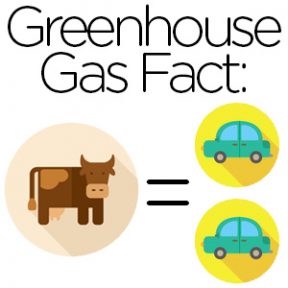 With the impending presidential election on everyone’s mind – both here in America and around the globe – I decided to try to better understand the election process to see how are voting system works. After the Bush-Gore debacle back in 2000, I realized that the electoral college can undermine what the actual people want. So here’s a quick history and explanation about the electoral college.
With the impending presidential election on everyone’s mind – both here in America and around the globe – I decided to try to better understand the election process to see how are voting system works. After the Bush-Gore debacle back in 2000, I realized that the electoral college can undermine what the actual people want. So here’s a quick history and explanation about the electoral college.
Whose idea was the electoral college?
James Madison, one of our founding fathers, added the electoral college to the Constitution to provide a check system to prevent a “tyranny of the majority.” In other words, Madison thought it best to have a small group represent all of the people to make sure that decisions are made in the citizens’ best interests. This assumes, of course, that the citizens don’t know what’s best for themselves.
Do elected officials consider their constituents’ mindset before casting their votes?
In the past, there have been 82 votes that have gone against the people’s wishes. Today, 29 states (of 50) require electors to represent the people’s wishes, but 21 states allow electors to go rogue. That’s 2/3s of the nation with elected officials who can choose whatever path they like regardless of their constituents’ support.
How are electoral votes determined?
Distribution of votes is based on the state’s population. Every 10 years, votes are reallocated after the national census is conducted. There are 538 electoral votes: 435 from the House of Representatives, 100 from the Senate (2 per state), and 3 from the District of Columbia. California has the most votes (55) followed be Texas (38), New York (29) and Florida (29). The states with the least votes are Alaska, Delaware, Montana, North Dakota, South Dakota, Vermont, and Wyoming. 48 states have winner takes all the votes except Nebraska and Maine (divide their votes proportionately).
How many electoral votes are needed to win?
270. If there is a tie, the House of Representatives elects the president. The crazy part about the electoral college is that a candidate can win the presidency without getting any votes from 39 states and the District of Columbia! WHAT? That means that a candidate could win just 11 states and become president.
What are “swing” states?
Swing states are those that don’t have a consistent history of voting either Republican or Democrat. Candidates spend most of their time campaigning in these states, especially as the election day approaches. Swing states are usually Colorado, Florida, Iowa, Michigan, Nevada, New Hampshire, North Carolina, Ohio, Pennsylvania, Virginia, and Wisconsin.
Can a candidate win the popular vote, but not win the presidential election?
Yes. This happened to Al Gore in 2000. He won the popular vote – more people voted for him than Bush — but he didn’t secure the 270 electoral votes needed to become president. So we ended up with Bush.
While I understand the need to have policies in place to prevent a hysterical movement from overtaking our government, I believe that with a popular vote, we will have a more balanced campaign season and we’ll elect a president who better represents the people.
In California, it seems we rarely see candidates on the campaign trail because we’re a blue (Democratic) and winner take all state. By going with the popular vote, we’ll see more Independents and possibly break the reign of our two-party system. So I lean towards the popular vote, and wish this was already in place.



 China’s National College Entrance Exam, or “gaokao” test consumes the lives of every Chinese student – and their families – from elementary to high school. This single test will determine whether or not the students will get into the top universities in China, which translates to having a life of financial success and marriage prospects. Wow.
China’s National College Entrance Exam, or “gaokao” test consumes the lives of every Chinese student – and their families – from elementary to high school. This single test will determine whether or not the students will get into the top universities in China, which translates to having a life of financial success and marriage prospects. Wow. 
 Can’t believe Nicole is in her 4th and last year of her residency at Harbor UCLA.
Can’t believe Nicole is in her 4th and last year of her residency at Harbor UCLA. 

 Did you know that the average family of four emits more greenhouse gases because of the meat they eat than from driving 2 cars?
Did you know that the average family of four emits more greenhouse gases because of the meat they eat than from driving 2 cars? 
 I’m grateful that I had 2 daughters. And, Rob loves his girls more than anything in the world. But, I distinctly remember how he tried to get Nicole and Jaclyn to love his favorite sport – baseball. We decided that because it was America’s favorite pastime, we would be doing them a cultural disservice if they didn’t play baseball at some point in their childhood. So, we convinced them that they would love their dad’s favorite game and signed them up to play in the Capitola/Soquel Little League. What happened next was, well, sad.
I’m grateful that I had 2 daughters. And, Rob loves his girls more than anything in the world. But, I distinctly remember how he tried to get Nicole and Jaclyn to love his favorite sport – baseball. We decided that because it was America’s favorite pastime, we would be doing them a cultural disservice if they didn’t play baseball at some point in their childhood. So, we convinced them that they would love their dad’s favorite game and signed them up to play in the Capitola/Soquel Little League. What happened next was, well, sad.

 As you probably know, dyslexics are super intelligent people who just have trouble reading. But did you know that there is a font designed to help dyslexics read? The stroke of each alphabet is weighted differently so they don’t appear upside down or backwards as they read.
As you probably know, dyslexics are super intelligent people who just have trouble reading. But did you know that there is a font designed to help dyslexics read? The stroke of each alphabet is weighted differently so they don’t appear upside down or backwards as they read. 
 It’s that time of year again! I love HALLOWEEN.
It’s that time of year again! I love HALLOWEEN. 


 Have you ever wondered why some cities streetlights have a warm amber glow, while others have a stark bluish tint? Well, some cities like Phoenix and towns in Connecticut have changed their street lamps to the lower color temperatures because they are more progressive than the rest of us.
Have you ever wondered why some cities streetlights have a warm amber glow, while others have a stark bluish tint? Well, some cities like Phoenix and towns in Connecticut have changed their street lamps to the lower color temperatures because they are more progressive than the rest of us.
 Now that most kids have been in school for 6 weeks, and 6-week grades are released, it’s time to get serious about their studies. Most teachers spend the first few weeks getting students on board with policies, rubrics, and review, so kids often claim that they have straight A’s at the start of the school year. Then, a few weeks later, you watch their grades slowly slip down to B’s, and then C’s… This is an easy fix if you can consistently insist on a routine. Yup! That’s it!
Now that most kids have been in school for 6 weeks, and 6-week grades are released, it’s time to get serious about their studies. Most teachers spend the first few weeks getting students on board with policies, rubrics, and review, so kids often claim that they have straight A’s at the start of the school year. Then, a few weeks later, you watch their grades slowly slip down to B’s, and then C’s… This is an easy fix if you can consistently insist on a routine. Yup! That’s it!
 Leave it to the students at MIT to
Leave it to the students at MIT to